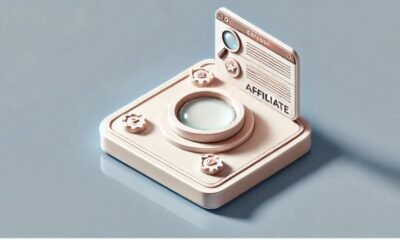Business
Choosing Between CDR and RPL for Australian Skills Recognition

Are you an engineer willing to migrate to Australia for your career development, or an ICT professional seeking to leverage your experience? You must then determine your ideal career path. For any foreign applicant seeking employment in Australia, obtaining approval from Engineers Australia (EA) for engineering roles, or the Australian Computer Society (ACS) for ICT roles, is essential. This blog will help you in choosing between CDR and RPL for Australian Skills Recognition.
But first, let’s learn about CDR, RPL, and KA02.
What Are the Main Types of Assessment Reports Required for Engineers Seeking Australian Immigration?
There are three primary assessment reports required by Engineers Australia (EA) for engineers aspiring to immigrate:
Competency Demonstration Report (CDR)
This is the most common pathway for engineers with formal engineering degrees, whether accredited or non-accredited. It involves detailed career episodes, a summary statement, and a professional development statement to showcase engineering competencies.
Recognition of Prior Learning (RPL) Report
This pathway is designed for individuals who possess extensive practical engineering experience but lack a formal engineering degree or have a degree that the Washington Accord does not recognise. It focuses on demonstrating knowledge and skills gained through work experience.
KA02 Report (Knowledge Assessment 02)
This report serves as a supplementary assessment tool, often used when additional evidence of competency is required, or for specific cases, such as members of the Institution of Professional Engineers New Zealand (IPENZ). It typically involves project reports and a summary statement.
Who Needs to Submit a CDR Report and What Are Its Key Components?
Primary Purpose:
The CDR Report is required to demonstrate your engineering competencies and knowledge against Australian professional engineering standards, particularly for those without an accredited engineering qualification from a country recognised by the Washington Accord.
Who Needs It?
Engineers who possess a qualification that is not accredited by Engineers Australia or a signatory of the Washington Accord, Sydney Accord, or Dublin Accord.
Educational Requirements:
Typically, for applicants with a Bachelor’s degree or higher in engineering from a non-accredited institution.
Work Experience:
While not strictly mandatory for submission, relevant work experience strengthens the report and shows the practical application of engineering knowledge. It typically includes career episodes highlighting specific projects and a summary statement.
Documentation Volume:
Comprehensive, including a CV, certified copies of academic transcripts, certificates, English proficiency test results, and three career episodes (each 1,000-2,500 words), and a summary statement.
The assessment duration for CDR is typically 8 to 12 weeks.
When Is an RPL Report the Appropriate Choice, and What Does It Entail?
Primary Purpose:
To assess the competency of ICT professionals (Information and Communications Technology) who do not have an ICT qualification or whose qualification is not recognised by the Australian Computer Society (ACS).
Who Needs It?
ICT professionals with significant work experience (typically 6-8 years) but lacking a formal ICT qualification or holding a non-ICT qualification with relevant experience. It is specifically designed for the Australian Computer Society (ACS) assessment for ICT roles, rather than for Engineers Australia (EA) engineering assessments.
Educational Requirements:
Not primarily focused on formal ICT academic qualifications, but rather on demonstrated skills and knowledge gained through work experience.
Work Experience:
Crucial, as it forms the basis of the assessment. Requires detailed project reports and evidence of skills acquired over many years. You can avail RPL Writing Services for ACS Australia to ensure you get approval on the first shot!
Documentation Volume:
Significant, involving detailed project descriptions, statements of responsibilities, and evidence demonstrating various ICT skills and knowledge areas.
The assessment duration for RPL reports by ACS Australia is typically 10 to 16 weeks.
What Is the Purpose of a KA02 Report, and Who Is It for?
Primary Purpose:
This report serves as a supplementary assessment tool, often used when additional evidence of competency is required, or for specific cases, such as members of the Institution of Professional Engineers New Zealand (IPENZ). It typically involves project reports and a summary statement.
Who Needs It?
Often, for engineers with qualifications assessed by IPENZ (Engineering New Zealand) who seek to apply for Engineers Australia membership or migration, or in specific, less common scenarios for Engineers Australia where additional knowledge assessment is required beyond a standard CDR.
Educational Requirements:
Generally assumes a foundational engineering degree. The report focuses on demonstrating current knowledge in specific areas.
Work Experience:
Relevant work experience is vital to demonstrate the practical application of knowledge assessed in the report.
Documentation Volume:
Typically involves a detailed written report that outlines theoretical knowledge, practical application, and may include case studies or projects.
Assessment Duration: 6-10 weeks.
What Are the Main Factors to Consider When Choosing between a CDR, RPL, or KA02 Report?
When deciding, consider:
- Your Profession: Are you an engineer or an ICT professional? This is the most critical distinction between CDR and RPL.
- Your Assessing Body: Are you aiming for Engineers Australia (EA) or the Australian Computer Society (ACS)?
- Your Educational Qualification: Is your engineering degree accredited by Engineers Australia or a Washington Accord signatory? If not, CDR is typically for you. If you’re an ICT professional without a formal degree, RPL is for you.
- Your Field of Study: Does your qualification align with the desired engineering or ICT occupation in Australia?
- Your Work Experience: How many years of relevant professional experience do you have, and can you clearly demonstrate your competencies through projects? For engineers, extensive experience is showcased within the CDR; for ICT professionals, it’s the core of the RPL.
- English Language Proficiency: All pathways require proof of English proficiency.
- Timeframe: How quickly do you need the assessment? CDRs and RPLs can take longer.
- Complexity of Documentation: CDRs are typically more intensive in terms of writing career episodes.
What Are Some Common Challenges Associated with Each Report Type?
| CDR | RPL (for ACS) | KA02 |
| Difficulty in selecting appropriate projects for career episodes. | Demonstrating skills without formal academic ICT qualifications. | Focusing on theoretical knowledge and its practical application. |
| Struggling to articulate personal contributions clearly and in STAR (Situation, Task, Action, Result) format. | Providing sufficient and compelling evidence from work experience in ICT. | Ensuring the report addresses specific knowledge gaps or updates required by the assessing body. |
| Demonstrating all 16 competencies required by Engineers Australia. | Structuring the report to cover all required ICT knowledge areas | |
| Plagiarism issues if not written genuinely. |
What Is the Typical Timeline for Preparing and Assessing Each Report?
- CDR Preparation: This process can take anywhere from 1 to 3 months, depending on the individual’s ability to gather information and write effectively.
- CDR Assessment: 8-12 weeks.
- RPL Preparation: Similar to CDR, 1-3 months for thorough documentation for ICT professionals.
- RPL Assessment: 10-16 weeks.
- KA02 Preparation: Often less intense than CDR, potentially 4-8 weeks.
- KA02 Assessment: 6-10 weeks.
However, if you hire a professional CDR, RPL, or KA02 writer, you can get your reports ready in just 15 days. This is because the report writers have experience and expertise in writing reports. Furthermore, they write from scratch and ensure that you receive a plagiarism-free report, adhering to the exact guidelines of EA and ACS.
Why Is It Crucial to Ensure the Submitted Report Genuinely Reflects One’s Engineering Competencies?
Submitting a genuine and accurate report is paramount for several reasons:
- Integrity and Ethics: Engineers Australia and the Australian Computer Society prioritise professional integrity and ethics. Any misrepresentation can lead to rejection and future bans.
- Safety and Standards: Australia has high professional standards to ensure public safety and quality of work. The assessment verifies that professionals meet these benchmarks.
- Career Success: A genuine assessment ensures you are placed in a role that matches your actual capabilities, leading to better career progression and job satisfaction.
- Legal Implications: False claims can have serious legal consequences.
Final Verdict
The best report for you depends entirely on your specific educational background, professional experience, and the requirements of the assessing body relevant to your profession (Engineers Australia for engineers, Australian Computer Society for ICT professionals). Thoroughly review the guidelines for each report type and, if necessary, seek professional advice to ensure you choose the correct pathway and present your competencies effectively.
Frequently Asked Questions
What Specific Type of Engineer Would Typically Need to Submit an RPL Report, and Why?
An engineer with extensive practical experience but potentially a non-engineering academic background, or a qualification from an unaccredited institution, might need an RPL-like assessment. The “Why” is to demonstrate competency through experience rather than formal education, especially if they have worked in specialised areas where their skills are highly developed. (As noted above, RPL is more commonly associated with ACS for ICT professionals; for Engineers Australia, the CDR is the primary route for those without accredited qualifications).
For Whom Is the Competency Demonstration Report (CDR) the Most Common Assessment Pathway?
The CDR is the most common pathway for engineers who have completed their undergraduate engineering education in countries whose qualifications are not recognised by Engineers Australia through accords like the Washington Accord. This includes a vast number of international engineers seeking to migrate to Australia.
What Kind of Professional Development Activities Are Generally Acceptable for Inclusion in a CDR Report?
Acceptable professional development activities for a CDR include:
- Post-graduate studies (Master’s, PhD)
- Conferences, workshops, seminars, and industry presentations attended or given.
- Short courses and training programs relevant to engineering.
- Mentoring other engineers.
- Voluntary work in engineering organisations.
- Reading technical journals and industry publications.
- Participation in professional engineering societies.
What Is the Primary Purpose of Engineers Australia (EA) in the Context of Engineering Professionals Seeking Australian Immigration?
The primary purpose of Engineers Australia (EA) in the context of engineering professionals seeking Australian immigration is to assess the qualifications and competencies of these professionals against Australian standards. This assessment ensures that migrant engineers possess the necessary skills, knowledge, and ethical understanding to practice safely and effectively in Australia, thereby protecting public interest and maintaining the high standards of the Australian engineering profession. EA is the designated assessing authority for engineering occupations by the Australian government.
-

 Tech1 year ago
Tech1 year agoHow to Use a Temporary Number for WhatsApp
-

 Business2 years ago
Business2 years agoSepatuindonesia.com | Best Online Store in Indonesia
-

 Social Media1 year ago
Social Media1 year agoThe Best Methods to Download TikTok Videos Using SnapTik
-

 Technology1 year ago
Technology1 year agoTop High Paying Affiliate Programs
-

 Tech10 months ago
Tech10 months agoUnderstanding thejavasea.me Leaks Aio-TLP: A Comprehensive Guide
-

 FOOD1 year ago
FOOD1 year agoHow to Identify Pure Desi Ghee? Ultimate Guidelines for Purchasing Authentic Ghee Online
-

 Instagram3 years ago
Instagram3 years agoFree Instagram Auto Follower Without Login
-

 Instagram3 years ago
Instagram3 years agoFree Instagram Follower Without Login



















